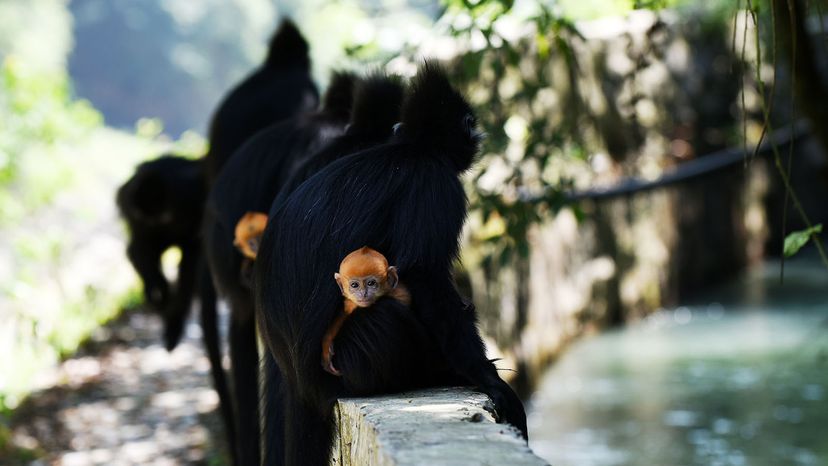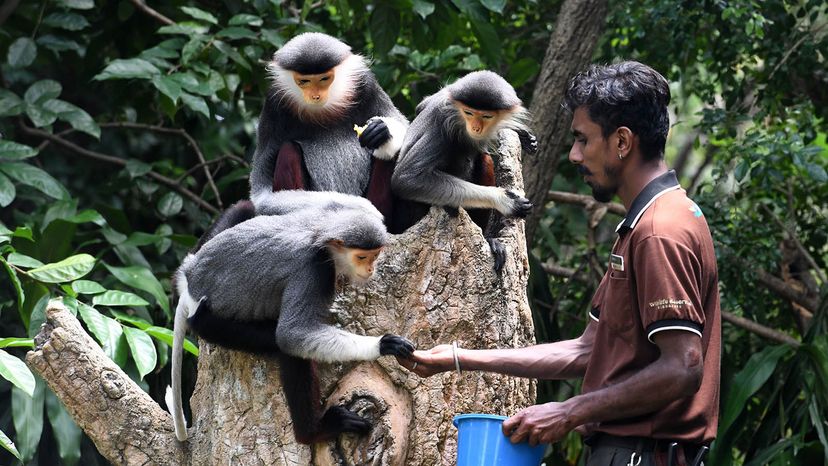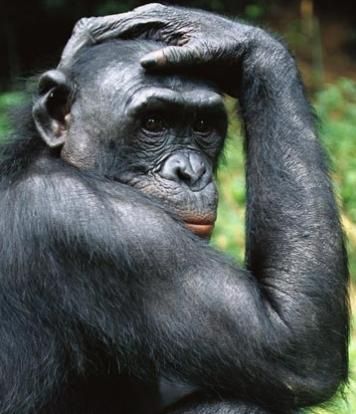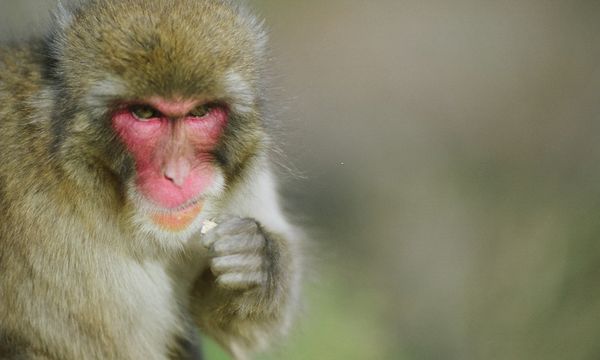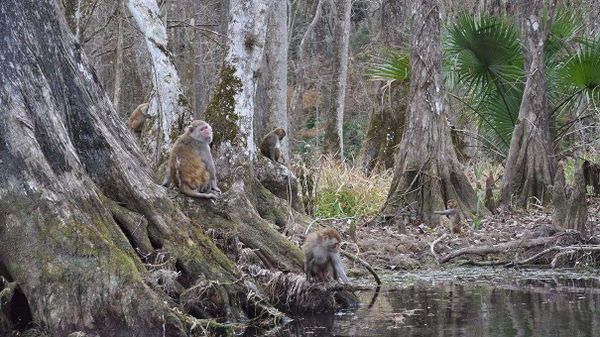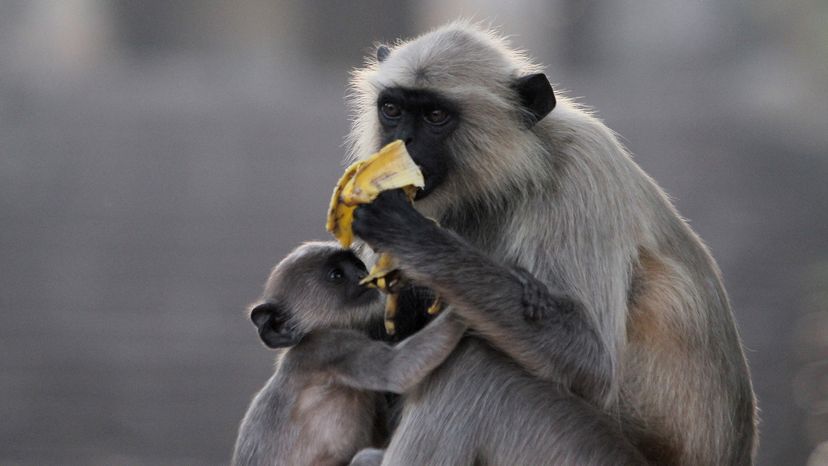
Many people think of a monkey as a cute, brown, fuzzy primate that uses vines to swing from tree to tree. But I bet you didn't know that there are actually more than 250 different species of monkeys in the world. They are divided into two groups: Old World monkeys that are native to Africa and Asia (like langurs), and New World monkeys that are indigenous to the Americas.
But their homes aren't the only reasons they differ. New World monkeys consist of almost exclusively tree-dwelling species, while Old World monkeys spend much of their time on the ground. New World monkeys also have prehensile tails, meaning they can use their tails to grasp or hold onto objects — balance and support that comes in pretty handy when they're moving among the trees. Meanwhile, Old World monkeys also have tails (in fact, langur is a Hindi word meaning "long tail"), but they lack the ability to grasp objects.
Advertisement
"Tails that truly grip are known as prehensile tails, and these are unique to New World monkeys," says Dean Gibson, curator of primates for San Diego Zoo Global, via an email interview. "Though langurs' slender tails are rather long, their tails aren't prehensile. They do come in very handy for balance when moving around the canopy of their jungly habitat, though."
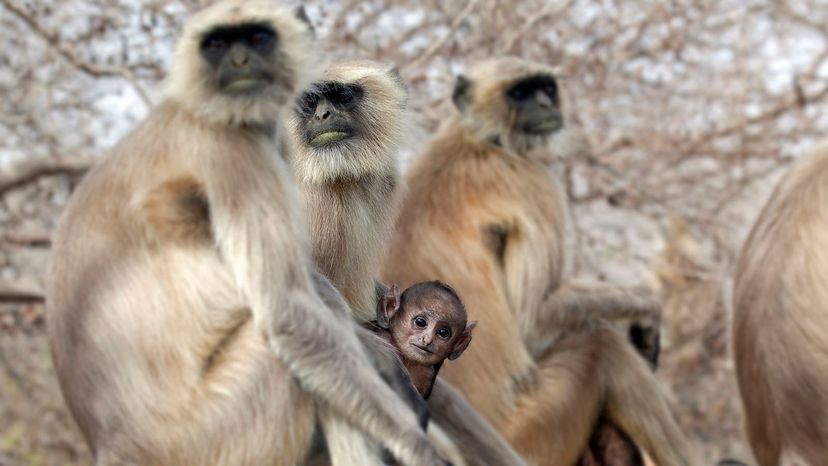
Langurs belong to a species of Old World monkey of the subfamily colobinae found throughout Southeast Asia and Southern China, as well as parts of India. "This group contains more than 60 species, all of them distinguished by their leaf-rich diet," says Gibson, a wildlife biologist who has more than 40 years of experience working with primates." Here are six fun facts about this unique monkey:
Advertisement
